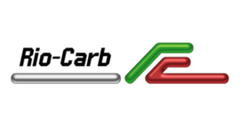Rio-Carb launches 6 mm(3/3) CrC overlay liner plate in South Africa
PRESS RELEASE
Rio-Carb launches 6 mm(3/3) CrC overlay liner plate in South Africa
31 July, 2013: A first-of-its-kind 6 mm Chromium Carbide (CrC) liner plate, which boasts a wear resistance of up to eight times more than industry standard Q + T“400” and “500” steels, has been introduced to the South African market by top liner plate expert Rio-Carb.
According to Rio-Carb director Colin Maine, the thinner characteristics of the 6 mm (3/3) CrC liner plate, which was launched by the company in June 2013, make it ideally suited for use in processing equipmentwith moving components, such as Induced Draft (ID) fans, cyclones and vibratory feeders.
"The thinner plate is not only more flexible to cater for the moving components, it is also more cost effective to purchase, as it is 25 per cent lighter than the previously thinnest 8 mm (4/4) CrC liner plates," he explains.
These unique characteristics are achieved using proprietary MaxCS Technology, whereby Rio-Carb is able to take the properties of CrC and cast it via a welding process onto a mild steel backing plate, giving it an optimum hardness of 58 RC, and while maintaining flexibility for moulding and shaping. Maine highlights the fact that the Rio-Carb 6 mm (3/3) CrC liner plate is also more environmentally friendly than Q and T steels, due to the fact that less material is consumed during the lifetime in the user’s process.
“Mineral processing operations are becoming more environmentally conscious and are consistently making efforts to shift towards greener equipment, in order to reduce their carbon footprint. This ultimately results in less wastage and a reduction in energy required when using the CrC. What's more, the superior abrasion resistance of the 6 mm (3/3) CrC liner plate results in a far longer lifespan, which drastically reduces costs associated to downtime and maintenance too," he notes.
Another important advantage that has enabled Rio-Carb to use the 6 mm CrC liner plate is the fact that the company uses welding standards that are compliant with the internationally-recognised specifications drawn up by the American Welding Society (AWS).The AWS is a non-profit organisation that was established with a goal to advance the science, technology and application of welding and related joining disciplines.
"Today, the AWS is recognised as a global authority on welding standards, and Rio-Carb is exceptionally proud to be associated with this institution. All our welding techniques are independently certified in laboratory testing facilities,” Maine continues. "This provides our customers with the peace-of-mind that they are being provided with products that meet the highest international standards of quality and cost effectiveness, which are independently verified by an external source."
Maine indicates that CrC welding presents certain challenges due to the high contents of carbon and chromium on the hard facing deposit, which can lead to product failure if not done correctly. “End-users need to be wary of welding processes that are not certified. Although the product may be cheaper, it may not meet international specifications, and will work out more expensive as a result of unscheduled downtime and maintenance on machinery.
“We have extensive facilities under one roof, including; cladding, rolling, welding, plasma cutting and studding, to name a few. This eliminates the need for any outsourcing, thereby preventing unnecessary hold-ups and reduced quality standards “he explains.
Looking to the future, Maine is optimistic that Rio-Carb will consolidate market share through the new 6 mm CrC (3/3) liner plate range. "The introduction of the new liner plate is complimentary and adds value to the existing Rio-Carb product offering, which now ranges in thicknesses from 6mm (3\3) through to 30 mm (20 mm CrC on 10 mm carbon steel). With a comprehensive stock holding and prompt turnaround times, Rio-Carb is one of the few companies in South Africa that has a CrC liner plate solution to meet any industrial requirement" he concludes.
Ends
Notes to the Editor
There are numerous photographs specific to this press release. Please visit http://media.ngage.co.za and click the Rio-Carb link.
About Rio-Carb
Rio-Carb manufactures wear-resistant Chromium Carbide clad liner plates for heavy materials handling applications in the mining and allied resources industries. The company was initially motivated by Martin Maine, who had experience in the welding and manufacturing industries. He was importing the current product from Australia, and saw the opportunity to establish local manufacture in 1982, when Rio-Tinto had ambitions to establish manufacturing companies allied to mining, and therefore, financed and capitalised the new Rio-Carb for local manufacture. After being in the Rio-Tinto (SA) stable for 16 years, there was a management buy-out by the existing and current share-holders.
Rio-Carb Contact
Martin Maine
Rio-Carb Director
Phone: (011) 908 1014
Fax: (011) 908 4139
Email: info [at] riocarb [dot] co [dot] za
Web: www.riocarb.com
Media Contact
Bridgette Macheke
NGAGE Public Relations
Phone: (011) 867-7763
Fax: 086 512 3352
Cell: 083 260 8214
Email: bridgette [at] ngage [dot] co [dot] za
Web: www.ngage.co.za

